Gregorio Weber Award
Honoring Excellence in Fluorescence
The Gregorio Weber Award for Excellence in Fluorescence Theory and Applications is an annual award which honors and recognizes distinguished individuals who have made original and significant contributions to the field of fluorescence. The award is named after Professor Gregorio Weber, who pioneered developments in the theory and the application of fluorescence techniques in biology and biochemistry. Award recipients are selected from a group nominated by their peers, and all nominees must be senior level researchers with a rank of full professor, lab director or equivalent.
Nominations
Nominations are sent to the President of ISS, who will forward the information to the members of the committee. Nominations for any given year must be received by October 31 of that year. Alternatively, nominations can be sent to the Chair of the Biological Fluorescence subgroup of the Biophysical Society. Any nomination received after the October 31 deadline will be considered for the following year. To nominate an individual for the next award, please email a 1-2 page letter describing their academic professional background, accomplishments and contributions to the field of fluorescence.
An Annual Award
The Gregorio Weber award is assigned yearly and consists of a plaque and a nominal check in the amount of $2,000 which will be consigned to the honoree at the Fluorescence Biological Subgroup meeting during the annual meeting of the Biophysical Society.

Selection Process
The honoree is selected by a committee of five scientists, nominated by ISS, and invited to serve for a three-year period. The committee alone makes the final selection of each year's award recipient.
Award Selection Committee
Alberto Diaspro, Professor
Istituto Italiano di Tecnologia
Nanoscopy, Center for Human Technologies
Via E. Melen 83 - Edificio B
16152 Genova, Italy
Debora Foguel, Professor
Universidade do Brasil
Instituto de Bioquímica Médica
Cidade Universitária – Ilha do Fundão
Rio de Janeiro – RJ Brasil
Taekjip Ha
Harvard Medical School
Department of Cellular and Molecular Medicine
25 Shattuck St
Boston, MA 02115, USA
Markus Sauer, Professor
Department of Biotechnology and Biophysics
University of Würzburg
Am Hubland
97074 Würzburg, Germany
Paul Selvin
University of Illinois at Urbana-Champaign
Department of Physics
110 West Green Street
Urbana, IL 61801, USA
Past Award Recipients
-
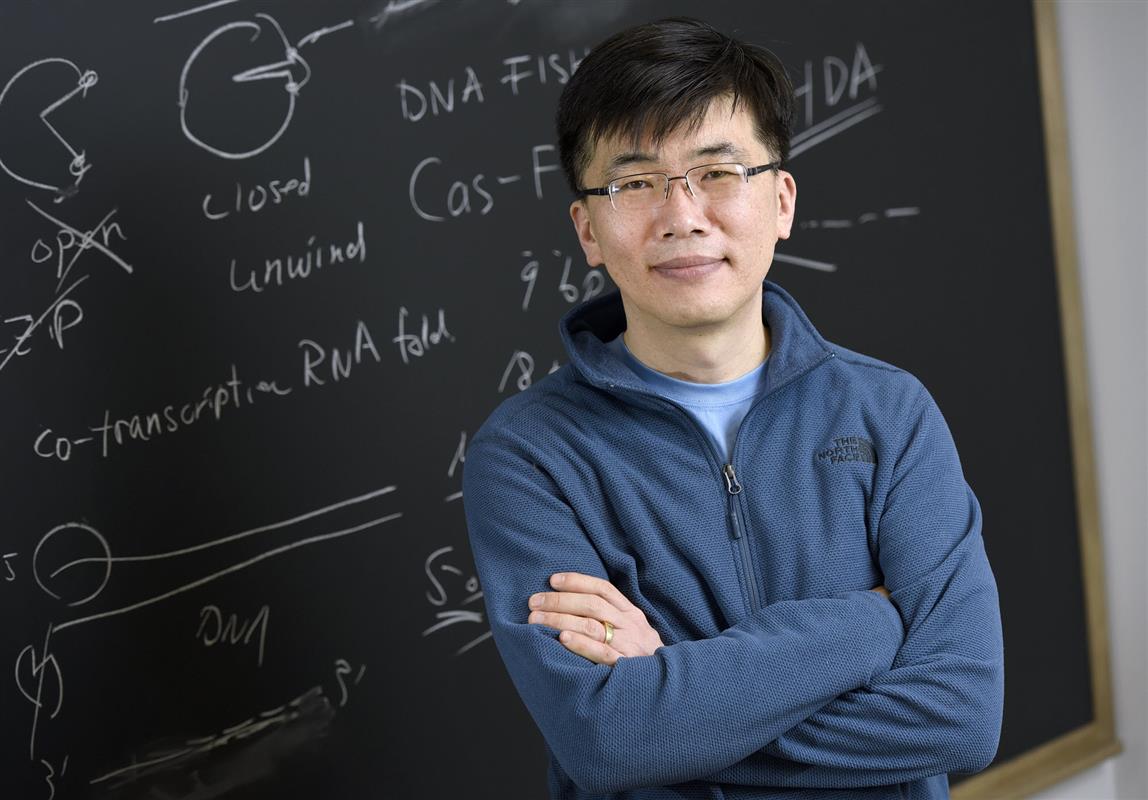
ISS was honored to recognize Dr. Taekjip Ha as the 2024 recipient of the Gregorio Weber Award for Excellence in Fluorescence Theory and Applications for his continued contributions to the evolution of the field. Our president, Beniamino Barbieri, presented the award to Dr. Ha on Saturday, February 10th, 2024 at the Biophysical Society Annual Meeting in Philadelphia.
Dr. Ha is currently the Senior Investigator of the Program in Cellular and Molecular Medicine at Boston Children’s Hospital, the George Yancopoulos in Honor of Frederick Alt endowed Chair of Pediatrics at Harvard Medical School, and Investigator at Howard Hughes Medical Institute.
Ha, previously a Bloomberg Distinguished Professor of Biomedical Engineering and Biophysics and Biophysical Chemistry at Johns Hopkins University, is a world leader in single-molecule biology and intracellular imaging. A physicist by training, Ha uses light to study nature’s nano-machinations. He is known for developing sophisticated physical techniques to manipulate and visualize the movements of single molecules to understand basic biological processes. In particular, he focuses on DNA transactions such as replication, recombination, and chromatin assembly, which may eventually lead to answers in addressing cancer and infectious diseases.
Ha received his BS in Physics at Seoul National University in 1990 and a PhD in Physics at the University of California at Berkeley in 1996. He joined Johns Hopkins in 2015 from the University of Illinois at Urbana-Champaign where he was the Gutgsell Professor of Physics and principal investigator of the Single Molecule Nanometry group. In 2021, Ha was elected President Elect of the Biophysical Society and assumed office in 2022.
He has received many international recognitions and awards for his pioneering work in biophysics including Elected Fellow, National Academy of Science (2021), Elected Fellow, Biophysical Society (2020), Kazuhito Kinosita Award in Single Molecule Biophysics, Biophysical society (2018), Elected Member, National Academy of Sciences (2015), and countless more. Has also has more than 37,000 citations in Google Scholar and an h-index of 103.
ISS is honored to recognize Dr. Taekjip Ha as this year’s recipient of the Gregorio Weber Award for Excellence in Fluorescence Theory and Applications for his continued contributions to the evolution of the field.
-
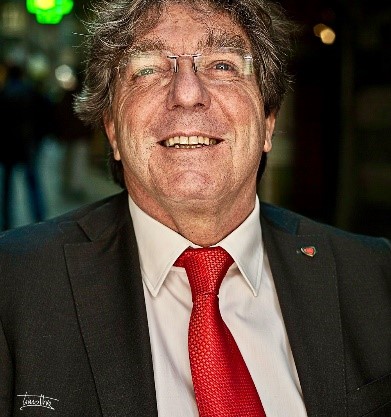
Dr. Alberto Diaspro is the 2022 winner of the Gregorio Weber Award. Diaspro is Director of the Department of Nanophysics at the Istituto Italiano di Tecnologia (IIT), Deputy Director of IIT, Full Professor of Applied Physics at Department of Physics of Genoa University (UNIGE), and Full Academic of the Ligurian Academy of Sciences and Humanities.
He was appointed as Director of the Nikon Imaging Center at IIT by Toshiuki Masai, President of Nikon Instruments Japan, in 2014. He is also founder, scientific advisor and member of the startup, Genoa Instruments (www.genoainstruments.com). Since 2016, he has been President of the Scientific Council of “Festival of Science,” and since 2021, he has been President of SIBPA, the Italian Society of Pure and Applied Biophysics.
Formerly, he was president of OWLS and EBSA and appointed vice president of ICO. His specific research experience is related to the design, realization and utilization of optical and biophysical instrumentation applied to molecular oncology (chromatin, endocytosis and adhesion mechanisms), neuroscience (brain mapping and neuronal network signaling) and smart materials (intelligent drug delivery and nanocomposite materials). He designed and realized the first Italian CIDS spectrometer in 1987, the first Italian multiphoton microscope in 1999, and a hybrid artificial “nanobiorobot” (2000-2005). He directed the design and development of the first Italian architecture for super resolved fluorescence microscopy at IIT in 2008.
Diaspro is editor-in-chief of Microscopy Research and Techniques. He has published over 350 papers, 16000 citations, h=60 (source Google Scholar), and authored 5 books.
He has also received many recognitions (SPIE fellow, IEEE and OSA senior member) and awards, including the Emily M. Gray Award for mentoring in Biophysics in 2014 and the Award for Scientific Communication by the Italian Physical Society in 2019.
ISS is honored to recognize Prof. Alberto Diaspro as the 2022 recipient of the Gregorio Weber Award for Excellence in Fluorescence Theory and Applications for his continued contributions to the evolution of the field and his endeavors to explain complex scientific achievements to the general public.
-
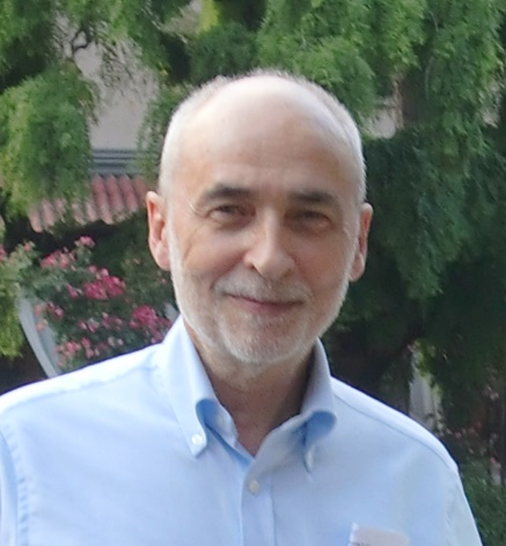
Prof. Francisco J. Barrantes is the winner of the 2021 Gregorio Weber Award; the award was announced during the Biophysical Society’s virtual 65th Annual Meeting.
Barrantes specializes in the fields of molecular neurobiology and biophysics of synaptic receptors. Throughout his career, he has published over 280 papers in international journals, which include more than 80 reviews and book chapters. He has also written two books on receptors and cholesterol effects on channels and receptors.
Alongside his two mentors, Eduardo De Robertis and Gregorio Weber, he developed the first fluorescent probe to study the nicotinic acetylcholine receptor.
For 10 years, Barrantes worked in Göttingen, Germany, where he was a joint leader of an independent research group at the Max-Planck Institute. During this time, he collaborated with Joachim Frank (Nobel awardee in Chemistry, 2017), and together produced the first images of the acetylcholine receptor at 2 nm resolution using single-particle averaging.
Later, in Argentina he introduced the patch-clamp technique and successfully combined its use with point mutations and fluorescence techniques in order to identify sites for cholesterol and phospholipids in the receptor. Barrantes’s seminal work shaped the current understanding of the modulatory role of the lipid microenvironment.
Barrantes also constructed the first super-resolution microscope, a nanoscope, in Latin America in 2008. This was a result of his collaboration with Stefan Hell (Nobel Awardee in Chemistry, 2014), started in 1999.
He is currently Professor and Head of the Laboratory of Molecular Neurobiology, at the Institute of Biomedical Research UCA-CONICET.
For his contributions to the scientific world, Barrantes has been globally recognized with countless awards. ISS is honored to recognize Francisco J. Barrantes as the 2021 recipient of the Gregorio Weber Award for Excellence in Fluorescence Theory and Applications for his outstanding and continued contributions to the field.
-
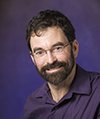
Prof. Paul Selvin is the winner of the 2020 Weber Award; the award was announced during the Annual Meeting of the Biophysical Society in San Diego, California.
Selvin has developed ground-breaking fluorescence instrumentation and techniques at the intersection of physics and biochemistry, shedding new light on the properties and behaviors of biomolecules in living cells. Early in his career, he devised the lanthanide resonance energy transfer (LRET) technique to investigate the chemical properties and structural dynamics of DNA systems. The LRET technique, which offered a 100-fold improvement in signal-to-background resolution over conventional techniques, is now widely used by the pharmaceutical industry for drug discovery.
Selvin also developed the single-molecule FRET (Förster resonance energy transfer) technique, with colleagues Johns Hopkins Professor Taekjip Ha and University of California, Los Angeles Professor Shimon Weiss. This breakthrough innovation took FRET to its ultimate sensitivity and is now widely used across the field of biophysics.
Selvin later developed a technique called FIONA (Fluorescence Imaging with One Nanometer Accuracy), which his group used for in vivo studies that elucidated the hand-over-hand locomotion mechanism of single-molecule myosin V, myosin VI, and kinesin. This technique brought into focus a new and deeper understanding of the biomechanics at work in living cells. Currently, the Selvin group specializes in single molecule fluorescence studies of nerve receptors, shedding new light on communications occurring between individual synapses in neurons. For this work, his group developed innovative techniques to manufacture extremely small quantum dots, enabling penetration of the synapse and establishing new inroads in this subfield.
Selvin received his bachelor’s degree in physics in 1983 from the University of Michigan and his doctoral degree in physics from the University of California, Berkeley, in 1990. He held postdoctoral appointments at Cal Berkeley’s chemistry department from 1991 to 1993, and then worked in that department as a research chemist from 1993 to 1997. He was then a staff scientist at Lawrence Berkeley National Laboratory from 1995 to 1997, before joining the faculty at Illinois Physics in 1997.
ISS is honored to recognize Prof. Paul Selvin as this year's recipient of the Gregorio Weber Award for Excellence in Fluorescence Theory and Applications for his continued contributions to the evolution of the field.
-
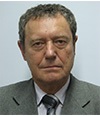
Prof. Alexander P. Demchenko is the winner of the 2019 Weber Award; the award will be announced during the upcoming Annual Meeting of the Biophysical Society in Baltimore, Maryland.
Prof. Demchenko is a well-known scientist in the field of molecular and membrane biophysics and in fluorescence spectroscopic research. He is the author of about 200 publications that are frequently cited in world literature and author of two classic monographs: Ultraviolet Spectroscopy of Proteins (Springer, 1986) and Introduction to Fluorescence Sensing (Springer, 2009/2015). He was also the editor of three books in the Springer Series on Fluorescence and the editorial board member of three journals.He studied molecular physics (Kyiv State, Shevtchenko University, 1967), obtained a PhD in Biochemistry (1972), and obtained a Habilitation in Biophysics (1982). Working in his home institution in Ukraine (Palladin Institute of Biochemistry) he was invited as a visiting professor to different universities in USA, Germany, Turkey, Hungary, France, and Taiwan. His research activities are versatile, often interdisciplinary, but always related to fluorescence.
Studying the mechanisms of excited-state proton transfer reactions allowed him to develop the new concept of fluorescence sensing and imaging employing two-color ratio metric fluorescence probes. He extended the theory and application of Weber's Red Edge effect to the spectroscopic domain and also to excited-state reactions of electrons and protons and energy transfer that suggested the new 'site-selective' methodology to biophysics.
ISS is honored to recognize Prof. Demchenko as this year's recipient of the Gregorio Weber Award for Excellence in Fluorescence Theory and Applications for his continued contributions to the evolution of the field.
-

Prof. Jerson Lima Silva and Prof. Debora Foguel are the winners of the 2018 Weber Award; the award was announced during the Annual Meeting of the Biophysical Society in San Francisco, California.
Debora Foguel received her degree in Biology from the Federal University of Rio de Janeiro (UFRJ) in 1987 and finished her PhD in Biochemistry in 1993 (Institute of Chemistry, UFRJ). She did part of her PhD (1991-1992) at the University of Illinois in Champaign-Urbana working in Dr. Gregorio Weber’s Lab.
She is Full Professor in the Institute of Medical Biochemistry at UFRJ. Her main research interest is in the study of the mechanisms responsible for protein folding-misfolding and amyloid aggregates formation. The pressure-assisted isolation of folding intermediates has made it possible to explore the mechanisms underlying protein misfolding, important in many human diseases, including Parkinson´s, familial amyloidotic polyneuropathy (FAP), tumoral and prion diseases. The participation of inflammation in these diseases has received attention from her research group in recent years. In collaboration with researchers form the University Hospital, her laboratory established the genetic diagnostic for familial amyloid polyneuropathies, a service that is being offered for free for the Brazilian population. Dr. Foguel has published more than 90 full papers in Journals of high impact factors (such as PNAS, J. Biol. Chem., J. Mol. Biol., Biochemistry, Biophys. J., among others), deserving prominence review papers in the Current Opinion in Structural Biology, Accounts of Chemical Research, Chemical Reviews and Trends in Biochemical Sciences. Dr. Foguel was the Advisor of 15 PhD Thesis and her articles with her Brazilian students are highly cited. Dr. Foguel was recipient of prizes and awards, including: Scientist of Rio de Janeiro State Awards (2003, 2005, 2007, 2009, 2011, 2013 and 2015), the Brazilian Order of Scientific Merit (2011) and Nise da Silveira Award from the Major of Rio de Janeiro City (2016) for her contributions on science and education. She is Researcher of CNPq – level 1A. Dr. Foguel is member of the Brazilian Academy of Sciences since 2009 and member of TWAS since 2016. She was member of the Editorial Board of the Journal of Biological Chemistry (2011-2016) and IUBMB Life (since 2010). Dr. Foguel was Editor of ‘Ciência Hoje’ e ‘Ciência Hoje da Crianças’, two publications dedicated to science divulgation, for 15 years. Dr. Foguel was Director of the Institute of Medical Biochemistry from 2007-2008 and 2009-2010. She was the President of the Brazilian Society of Biochemistry and Molecular Biology (2008-2010) and she was the Vice-Rector (Provost) of Research and Graduate Programs of Federal University of Rio de Janeiro (2011-2015).ISS is honored to recognize Prof. Silva and Prof. Foguel as this year's recipients of the Gregorio Weber Award for Excellence in Fluorescence Theory and Applications for their continued contributions to the evolution of the field.
-
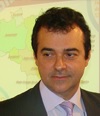
Prof. Jerson Lima Silva and Prof. Debora Foguel are the winners of the 2018 Weber Award; the award was announced during the Annual Meeting of the Biophysical Society in San Francisco, California.
Jerson Lima Silva received his degree of Medical Doctor from the Universidade Federal do Rio de Janeiro (UFRJ) in 1984 and finished his PhD in Biophysics in 1987 (Institute of Biophysics, UFRJ). He is Full Professor of Biochemistry in the Institute of Medical Biochemistry at Universidade Federal do Rio de Janeiro. His main research interest is the study of the basic factors responsible for protein folding, protein-nucleic acid interactions and for the formation of biological assemblages such as viruses and amyloid aggregates. Dr. Silva has published more than 170 full papers, deserving prominence review papers in the Annual Review of Physical Chemistry, Current Opinion in Structural Biology, Accounts of Chemical Research, Trends in Biochemical Sciences, Accounts of Chemical Research and Chemical Reviews. His research is published in Journals of high impact index (such as, J. Mol. Biol., Biochemistry, PNAS, Biophys. J., J. Biol. Chem., Protein Science, J. Exp. Med., J. Virol., J. Amer. Chem. Soc.). His research articles are highly cited with more than 5500 citations (H index= 43). The work of Silva has added a new impetus for the use of pressure perturbations in the field of protein structure and dynamics. More recently, the pressure-assisted isolation of folding intermediates has made it possible to explore the mechanisms underlying protein misfolding, important in many human diseases, including tumoral, prion and Parkinson´s diseases. Silva was the Advisor of 33 PhD Thesis. Silva was recipient of many prizes and awards, including: Fellow of the John Simon Guggenheim Foundation, 1991; Brazilian Sendas Award for Scientific Work on Infectious Diseases of Children (shared), 1995; International Scholar, Howard Hughes Medical Institute, 1997; Centers of Excellence Award, Ministry of Science and Technology, 1998; National Unibanco Award in Medicine for Medical Research (shared), 1998; Scientist of Rio de Janeiro State Award, 2000, 2003, 2005, 2007; Brazilian Order of Scientific Merit , Presidency of the Republic of Brazil, Command in 2002, Great-Cross in 2009; TWAS Prize in Biology 2005, the Academy of Sciences for the Developing World (TWAS), 2005; FCW Prize in General Science from Fundação Conrado Wessel, 2010; "Faz Diferença" Prize in Science and Health 2012 (Jornal O GLOBO); Gregorio Weber Award (American Biophysical Society - 2018).ISS is honored to recognize Prof. Silva and Prof. Foguel as this year's recipients of the Gregorio Weber Award for Excellence in Fluorescence Theory and Applications for their continued contributions to the evolution of the field.
-

Prof. Yves Mély is the winner of the 2017 Weber Award; the award was announced during the Annual Meeting of the Biophysical Society in New Orleans, Louisiana.
Yves Mély is a Professor at the Faculty of Pharmacy, University of Strasbourg. He received his doctorate in Biophysics from the University Louis Pasteur, Strasbourg in 1988 where in 1989 he was appointed Assistant Professor at the Faculty of Pharmacy. After a sabbatical at the Max Planck Institute of Biophysics, Frankfurt, with the support of a von Humboldt fellowship, he became a full Professor in Biophysics at the Faculty of Pharmacy in 1998; since 1999 he has been the leader of the team "Biophotonics of the Molecular and Cellular Interactions". In 2009 he was appointed Director of the Laboratory of Biophotonics and Pharmacology, UMR 7213 CNRS.He received an Honorary Doctorate from the National Taras Shevchenko University of Kiev in 2011. In 2015 he was invited as a senior scientist at Riken, Japan.
Prof. Mély has authored over 270 publications. His research interests are focused on the development and applications of fluorescence techniques (steady-state and time-resolved fluorescence spectroscopy, two-photon FLIM and FCS, and, more recently, super-resolution microscopy) and innovative environment-sensitive fluorescence probes for membranes, proteins and nucleic acids. He uses these techniques and probes to characterize both in solution and cells the molecular mechanisms, interactions and functions of proteins of therapeutic interest which include proteins of the Human Immunodeficiency Virus type 1. Prof. Mély is also strongly involved in the promotion of fluorescence through serving as the chair of the Methods and Applications in Fluorescence conference series since 2011 and co-chair of the Fluorescent Biomolecules and their Building Blocks conference series since 2014; he is a founder and the editor-in-chief of the journal Methods and Applications in Fluorescence since 2012. He served as a member of the French Comité National de la Recherche Scientifique and the National Committee of the Universities.
ISS is honored to recognize Prof. Mély as this year's recipient of the Gregorio Weber Award for Excellence in Fluorescence Theory and Applications for his continued contributions to the evolution of the field.
-
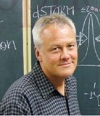
Prof. Marcus Sauer is the winner of the 2016 Weber Award; the award was announced during the Annual Meeting of the Biophysical Society in Los Angeles, California.
Marcus Sauer is professor at the Department of Biotechnology & Biophysics, Biocenter, University of Würzburg. Born in 1965 in Pforzheim, he studied Chemistry at the Universities of Karlsruhe, Saarbrücken and Heidelberg. In 1995 he received his doctorate in physical chemistry in the field of dye development for highly sensitive biomedical applications. In 1998 he received the BioFuture price of the BMBF, which enabled him to initiate independent research in the field of single-molecule microscopy and spectroscopy. In 2003 he was appointed to the Chair for laser Physics at Bielefeld University and in 2009 he was appointed in the Department of Biotechnology & Biophysics at the University of Würzburg.His research interests include the development of new high-resolution microscopy methods, characterization and analysis of individual molecules and the study of the conformational dynamics of biomolecules with high time resolution under equilibrium conditions. Markus Sauer is a recognized pioneer in the development of dyes for super-resolution microscopy. He authored more than 180 publications in very prestigious journals in the field. Among other techniques, he is well known for the dSTORM super-resolution technique.
ISS is honored to recognize Prof. Sauer as this year's recipient of the Gregorio Weber Award for Excellence in Fluorescence Theory and Applications for his continued contributions to the evolution of the field.
-

Prof. Ludwig Brand is the winner of the 2015 Weber Award; the award was announced during the Annual Meeting of the Biophysical Society in Baltimore, Maryland.
Ludwig Brand is professor at the Johns Hopkins University in Baltimore where he worked at the Department of Biology for more than thirty years. After his undergraduate studies at Harvard University, he received his doctoral degree from Indiana University. He joined the Johns Hopkins University faculty after post-doctoral studies at Brandeis University and the Weizman Institute.The main interests in Prof. Brand's research encompass the study of conformational dynamics of biological macromolecules, especially the dynamics structure of proteins, biological membranes and nucleic acids. He used fluorescence spectroscopy to uncover the dynamics of proteins in time scales from pico- to millisecond thus helping in uncovering the notion of a protein as a static structure but a rather dynamical assembly interacting with the surrounding water matrix.
ISS is honored to recognize Prof. Brand as this year's recipient of the Gregorio Weber Award for Excellence in Fluorescence Theory and Applications for his continued contributions to the evolution of the field.
-

The winner of the 2014 Weber Award was announced today during the Annual Meeting of the Biophysical Society in San Francisco, California. The award was consigned to Prof. Thomas Jovin.
Thomas Jovin is the Director of the Laboratory of Cellular Dynamics at the Max Planck Institute for Biophysical Chemistry in Göttingen (Germany). Born in Argentina in 1939, he studied biology at The California Institute of Technology and obtained a MD degree from Johns Hopkins in 1964. He joined the Max Planck Institute in 1969 and has acted as a Director since 1971.Prof. Jovin's research deals with the study of biological processes using physical-chemical methods. Some of his main research topics include the mechanisms of growth-factor mediated signaling in eukaryotic cells; the molecular mechanisms of amyloid protein association and aggregation; and the molecular mechanisms underlying cytopathology in Parkinson's disease. He has introduced the development and use of advanced organic and nanoparticle biosensors and optical sectioning fluorescence microscopy in the study of living cells. His research activity is detailed in the publication of almost 500 articles.
ISS is honored to recognize Prof. Jovin as this year's recipient of the Gregorio Weber Award for Excellence in Fluorescence Theory and Applications for his continued contributions to the evolution of the field.
-
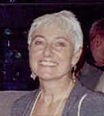
The winner of the Weber Award was announced during the Annual Meeting of the Biophysical Society in Philadelphia, Pennsylvania. Prof. Maïté Coppey-Moisan has been chosen for the award.
Prof. Maïté Coppey-Moisan is Director of Research at Institut National de la Recherche Scientifique et Médicale (INSERM) in Paris where she head a team and a cell imaging facility at Institut Jacques Monod. She coordinates a national distributed infrastructure, France-BioImaging, recently financed by the French government. Prof. Maïté Coppey- Moisan is also Associate Professor at University Paris-Diderot.Prof. Coppey-Moisan was educated in physico-chemistry at University Paris 7 and obtained a PhD ("thèse 3ième cycle") in 1976 in biochemistry and a "Thèse Etat" in 1981 in Biophysics working with Dave Jameson in Gregorio Weber's Laboratory at Urbana Champaign. She was a postdoctoral fellow at Princeton University in the Tom Spiro's Laboratory.
After 14 years spend on the functional properties of heamoproteins studied by steady state and time resolved spectroscopy (fluorescence and Raman), Prof. Coppey-Moisan's research interest are in the field of macromolecular interactions and dynamics in living cells. She is one of the pioneers in the application of fluorescence spectroscopy for the analysis of DNA and chromatin dynamics in living cells. Her present research is focused on the mechanical tensions and the dynamics of cell shape regulation. Prof. Coppey- Moisan is also strongly involved in the dissemination of advanced light microscopy, super resolution and fluorescence fluctuations based spectroscopy to a wide scientific community in the frame of France-BioImaging.
Prof. Maïté Coppey-Moisan is the coauthor of over 50 articles or book chapters. She served French National Committees at INSERM, Agence National de la Recherche and University Paris-Diderot for several years. She is member of the National Scientific Committee of INSERM workshops.
-
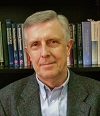
The winner of the Weber Award was announced during the Annual Meeting of the Biophysical Society in San Diego, California. The award has been consigned to Prof. Bernard Valeur.
Bernard Valeur is emeritus professor at the Conservatoire National des Arts et Métiers (CNAM) in Paris where he taught physical chemistry for almost thirty years. He is a member of the laboratory of Photophysique et Photochimie Supramoléculaires et Macromoléculaires at the École Normale Supérieure de Cachan.Prof. Valeur received his engineering diploma from the École Supérieure de Physique et de Chimie Industrielles de Paris (ESPCI) and his PhD degree from the Université Pierre-et-Marie-Curie (Paris). He was a postdoctoral fellow at the University of Illinois at Urbana-Champaign in Gregorio Weber's laboratory. After being an associate professor at ESPCI, he became full professor of physical chemistry at CNAM in 1979.
Prof. Valeur served as an elected member of the french Comité National de la Recherche Scientifique from 1995 to 2000. He was a member of the permanent steering committee of the International Conference on Methods and Applications of Fluorescence Spectroscopy from 1995 to 2008, and he was the chairman and organizer of the 6th conference of this series in Paris. He is an IUPAC fellow (International Union of Pure and Applied Chemistry). He serves at the editorial boards of the Journal of Fluorescence, Journal of Photochemistry and Photobiology A, ChemPhysChem.
Prof. Valeur's research interests are in the fields of photophysics and photochemistry. He has been currently using steady-state and time-resolved fluorescence techniques for investigating polymers, microemulsions, supramolecular systems including multichromophoric cyclodextrins and calixarenes. He is one of the pioneers in the development of fluoroionophores consisting of fluorophores linked to ionophores for highly selective sensing of metal ions, especially toxic heavy metal ions in environment. His present research includes reversible photoswitchable molecular tweezers for release and capture of calcium ions in order to study calcium-dependent biological processes, and light-driven molecular shuttles of ions for information storage at a nanometric scale (with read-out by fluorescence).
Prof. Valeur enjoyed numerous collaborations with biologists and biophysicists: Jean-Pierre Changeux, Gregorio Weber, Enrico Gratton, Claude Hélène, Michel Monsigny, Jean-Claude Brochon and others.
Prof. Valeur is the author or coauthor of over 170 articles or book chapters, co-editor of one book, and single author of 5 books including Molecular Fluorescence. Principles and Applications, and Invitation à la Fluorescence Moléculaire which are well-established bestsellers.
-

The winner of the Weber Award was announced during the Annual Meeting of the Biophysical Society in Baltimore, Maryland. The award has been consigned to Prof. Ken Jacobson.
Ken Jacobson is a Kenan Professor of Cell & Developmental Biology at the University of North Carolina (UNC) at Chapel Hill. He has done research in cell membrane biophysics and in cell migration for over 35 years resulting in over 170 publications in leading journals. Ken was educated at the University of Wisconsin in Physics (BS & MS) and obtained a PhD from the State University of New York at Buffalo in Biophysical Sciences in 1972. He has worked for Dow Corning Corporation, Roswell Park Memorial Institute and, since 1980, for the UNC School of Medicine.Beginning in the early 1970s, Ken has contributed to our thinking on how the cell membrane is organized by developing methods to measure lateral mobility in the plasma membrane, primarily using technologies based on the fluorescence microscope. Such measurements tell us that the membrane is certainly not homogeneous, and they begin to tell us about the domains that exist in the membrane and their function.
Shortly after joining the UNC faculty in 1980, Ken was one of the earliest developers of digitized fluorescence microscopy and its applications to cell biology. Shortly thereafter, he and his laboratory began their study of the physical principles of how cells migrate using simple-shaped cells as a model. This work has involved developing tools to measure the traction forces the cell must apply to the surface on which it crawls. In addition, methods have been developed to perturb the molecular machinery of cell migration using laser beams to illuminate small regions of single, moving cells. Working with theoreticians, the goal is to approach a major challenge for cell biology: how to integrate myriad molecular pieces into a global understanding of motile phenomena.
For the past 20 years, Ken has also been interested in renewable energy and has been involved in a joint effort with the Research Triangle Institute, the UNC Center for Global Health and North Carolina State University to develop a small solar-powered vaccine cooler based on semiconductor thermoelectric principles to significantly reduce vaccine wastage at the end stage of the "cold chain" in the developing world.
-
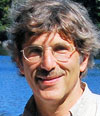
The winner of the Weber Award was announced during the Annual Meeting of the Biophysical Society in Long Beach, California. The award has been consigned to Prof. Daniel Axelrod.
Professor Daniel Axelrod specializes in the development and application of novel fluorescence microscopy techniques useful to cell biologists and biochemists. He is currently a Professor Emeritus in the Dept. of Physics and Biophysics at the University of Michigan (UM Ann Arbor).
While at Michigan in 1981, he introduced total internal reflection fluorescence (TIRF) microscopy, now a popular method to view cell dynamics and single molecules at surfaces, because of its greatly reduced out-of-focus background. Subsequently, in collaboration with many excellent graduate students and other researchers, he combined TIRF with a variety of other techniques including fluorescence polarization, energy transfer, spatial and temporal correlation, and photobleaching recovery to explore a variety of problems in surface biochemical kinetics and membrane and receptor dynamics. He currently collaborates with Prof. Ron Holz in the UM Pharmacology Dept. using these combinations to help understand the dynamics of cellular secretion. Before coming to Michigan, he was a postdoc in the lab of Prof. Watt Webb at Cornell, where, in collaboration with Prof. Eliot Elson and with other researchers, he helped put fluorescence recovery after photobleaching (FRAP) on a mathematically quantitative basis and apply it to studies of cell surface receptor mobility.
Prof. Axelrod received a B.S. in Physics and in Mathematics from Brooklyn College, and a Ph.D. in Physics from the University of California at Berkeley. He is the author or coauthor of more than 100 publications, and has taught a diverse range of college courses ranging from standard physics and biophysics to graduate-level optical microscopy, the history and science of nuclear strategy, and the physics of music. -
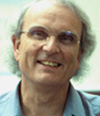
Prof. Clegg graduated from Kansas State University in 1968 and conducted his doctorial studies at Cornell University where he was awarded the Ph.D. in 1974, under the supervision of Prof. Elson; his dissertation was titled Relaxation Kinetics Applying Repetitive Pressure Perturbations. Following graduation, Professor Clegg moved to Göttingen, Germany, where he started work as a postdoctoral research associate in the Max Planck Institute for Biophysical Chemistry. In 1976, he was promoted to Senior Staff Research Associate in the Department of Molecular Biology. Dr. Clegg remained at the Max Planck Institute until he accepted a position as Professor of Physics at the University of Illinois at Urbana-Champaign in 1998. Presently, Dr. Clegg is a Professor in the Departments of Physics and Bioengineering and is on the faculty of the Biophysics Program at the University of Illinois.
Prof. Clegg research is multifaceted, though it is centered on the elucidation of multifarious molecular structures, conformational changes, thermodynamic stabilities and functions of nucleic acids and protein/nucleic acid complexes. He employs a variety of techniques, such as fluorescence spectroscopy, rapid kinetic methods and physical perturbations in order to probe the intra- and intermolecular interactions of these macromolecular structures and to understand the physical basis of their biological functions. Fluorescence resonance energy transfer (FRET) is used for mapping the three-dimensional structures of biological macromolecules. Conformational changes are followed by employing steady-state and time-resolved fluorescence techniques. Thermodynamic conditions and molecular-context features influence which structures are preferred by macromolecules.
Prof. Clegg is a pioneer in the development of full-field fluorescence lifetime-resolved microscopy (FLIM) and its applications to endoscopy for medical applications (e.g. in tumor diagnosis). These new imaging methods are applied to a variety of biological problems, such as the detection of tumor cells and their discrimination from healthy cells by identifying specific fluorescence lifetimes. These techniques introduce new opportunities for quantifying and improving the discrimination of images of fluorescence molecules in biological systems. The technology has been applied to fast kinetics studies (microsecond mixing of two fluids) and the study of photosynthesis. -
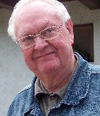
Professor Visser is an international expert in the development of fluorescence methods and their applications to the investigation of proteins and membranes both in vitro and in vivo. He is (part-time) professor at the Department of Structural Biology of the Vrije Universiteit Amsterdam and professor at the Department of Biochemistry of Wageningen University. He is the founder of the MicroSpectroscopy Centre (MSC) at Wageningen University (1996) and was the director of the MSC until 2007. The MSC is an established expertise centre in which advanced optical imaging methods have been developed as a tool to answer research questions in cell biology, biochemistry and biophysics. The MSC facilities are also used in (inter)national post-graduate courses in advanced imaging technology in cell biology. His current research interests encompassed the use of advanced fluorescence methods for the investigation of flavoproteins, of FRET-sensors based on visible fluorescent proteins and of protein (un)folding. He also contributed in cell biophysical research related to chemotaxis and plant cell signalling. The methods he has established in his laboratory have attracted collaborations and joint publications with 29 different international researchers (e.g. in the USA, UK, France, Germany, Japan, Russia) and with 16 Dutch national scientists. He is the author or co-author of over 220 publications in scientific journals with a peer review system. He has served at the Advisory Editorial Boards of the Journal of Fluorescence, European Biophysics Journal and Biophysical Chemistry. Since 2006 he has coordinated a European Union Marie Curie Research Training Network (acronym: from FLIM to FLIN) focusing on development and exchange of expertise in advanced fluorescence imaging technology.
-
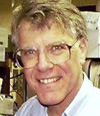
Professor Elson graduated from Harvard University in 1959 with an A.B. in Biochemical Science. His graduate work at Stanford University (Ph.D., 1966) was with Robert Baldwin in the Department of Biochemistry. After a post-doc with Bruno Zimm at the University of California San Diego, he joined the chemistry faculty of Cornell University in 1968 as an Assistant Professor. He was promoted to Associate Professor in 1974 and Professor in 1978.
At Cornell he pioneered the development of fluorescence correlation spectroscopy and fluorescence photobleaching recovery in collaboration with Watt Webb of the Cornell Physics Department, and also developed the repetitive pressure perturbation kinetics method. In 1979 he moved to the Department of Biological Chemistry (now the Department of Biochemistry and Molecular Biophysics) at Washington University School of Medicine, where he has studied the movement and distribution of cell surface proteins, cell motility, and the forces which determine the shapes of cells. -

Dr. Lakowicz is a professor at the University of Maryland College of Medicine in the Department of Biochemistry and Molecular Biology. He also is the Director of the Center for Fluorescence Spectroscopy (CFS) in Baltimore.
Dr. Lakowicz attended LaSalle College in Pennsylvania where he earned a B.A. in Chemistry and graduated Magna Cum Laude. He then pursued his M.S. and subsequently a Ph.D. in Biochemistry at the University of Illinois, Urbana-Champaign.
After he received his Ph.D., Dr. Lakowicz worked as an Assistant Professor at the University of Minnesota for six years and moved in 1980 to the University of Maryland at Baltimore, School of Medicine, where he advanced to full professor in 1984.
Since 1988 Dr. Lakowicz has been the Director of the Center for Fluorescence Spectroscopy (CFS), which is a national resource of the National Institutes of Health (NIH) for the development of fluorescence technologies. The research emphasis of the CFS is on probe chemistry, light quenching, multi-phonon excitation, fluorescence sensing, lifetime imaging and microscopy. In the last few years Prof. Lakowicz began working on a very exciting, new topic Radiative Decay Engineering, which promises revolutionary ways for using fluorescence in the biomedical fields.
In addition to his present research, Dr. Lakowicz has made many significant contributions to the chemical synthesis of new fluorophores, development of time-resolved instrumentation, pioneering studies of photon migration imaging, multi-photon excitation, and in fluorescence sensing.
Along with his extensive academic accomplishments, Dr. Lakowicz has published over 400 scientific articles and has edited several books on Topics in Fluorescence Spectroscopy. His single-author books Principles of Fluorescence Spectroscopy are widely used and conventionally considered to be the central reference in the field of fluorescence research. Dr. Lakowicz was the founding Editor-in-Chief of the Journal of Fluorescence and the founder of the Journal of Biomedical Optics. -
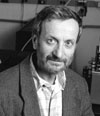
Enrico Gratton was born in Merate (Como) Italy in 1946. He received his doctorate degree in physics from the University of Rome in 1969. From 1969 to 1971 he was a post-doctoral fellow at the Istituto Superiore di Sanità in Italy. He came to the University of Illinois at Urbana-Champaign (UIUC) in 1976 and began his work as a research associate in the Department of Biochemistry. In 1978, he was appointed assistant professor in the Department of Physics of the University of Illinois at Urbana-Champaign (UIUC). In 1989, he was promoted to professor. Dr. Gratton's laboratory has reached international recognition for the development of instrumentation for time-resolved fluorescence spectroscopy using frequency domain methods.
In 1986, Dr. Gratton was awarded a grant from the National Institutes of Health, National Center for Research Resources, to establish the first national facility dedicated to fluorescence spectroscopy: the Laboratory for Fluorescence Dynamics (LFD). The LFD, housed in Loomis Laboratory of Physics at UIUC, is a state-of-the-art fluorescence laboratory for use by local, national, and international scientists. It has a dual and equal commitment to research and development of fluorescence instrumentation and theory and to service in a user-oriented facility. Dr. Gratton's research interests are varied and many; they include design of new fluorescence instruments, protein dynamics, hydration of proteins, and I.R. spectroscopy of biological substances. Dr. Gratton has authored or co-authored over 250 publications in refereed scientific journals. -
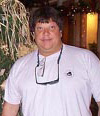
A student of the late Prof. Gregorio Weber, David Jameson is Full Professor in the Department of Cell and Molecular Biology at the University of Hawaii. Prof. Jameson's research interests are focused on the development and application of time-resolved and steady-state fluorescence methodologies to elucidate dynamic aspects of biomolecules, including proteins, nucleic acids and membrane systems.
Currently, his laboratory is investigating several protein systems, including both prokaryotic and eukaryotic ribosomal proteins, the GTP binding protein dynamin, the motor protein kinesin and Electron Transfer Flavoprotein (ETF). One of his laboratory's principle approaches is to use site-directed mutagenesis techniques to incorporate cysteine residues into target proteins, which can then be linked to sulfhydryl reactive fluorescence probes. Fluorescence measurements can then be used to quantify dynamic aspects of these proteins during their interactions with physiologically significant ligands.
Author of more than 100 peer-reviewed articles, Prof. Jameson regularly reviews grants for the American Heart Association, the Howard Hughes Medical Institute and the National Science Foundation. His research has been supported by grants from the National Institutes of Health, the National Science Foundation and the American Heart Association.
